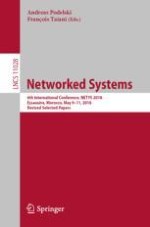
2019 | OriginalPaper | Buchkapitel
Program Analyses Using Newton’s Method (Invited Paper)
verfasst von : Thomas Reps
Erschienen in: Networked Systems
Aktivieren Sie unsere intelligente Suche, um passende Fachinhalte oder Patente zu finden.
Wählen Sie Textabschnitte aus um mit Künstlicher Intelligenz passenden Patente zu finden. powered by
Markieren Sie Textabschnitte, um KI-gestützt weitere passende Inhalte zu finden. powered by